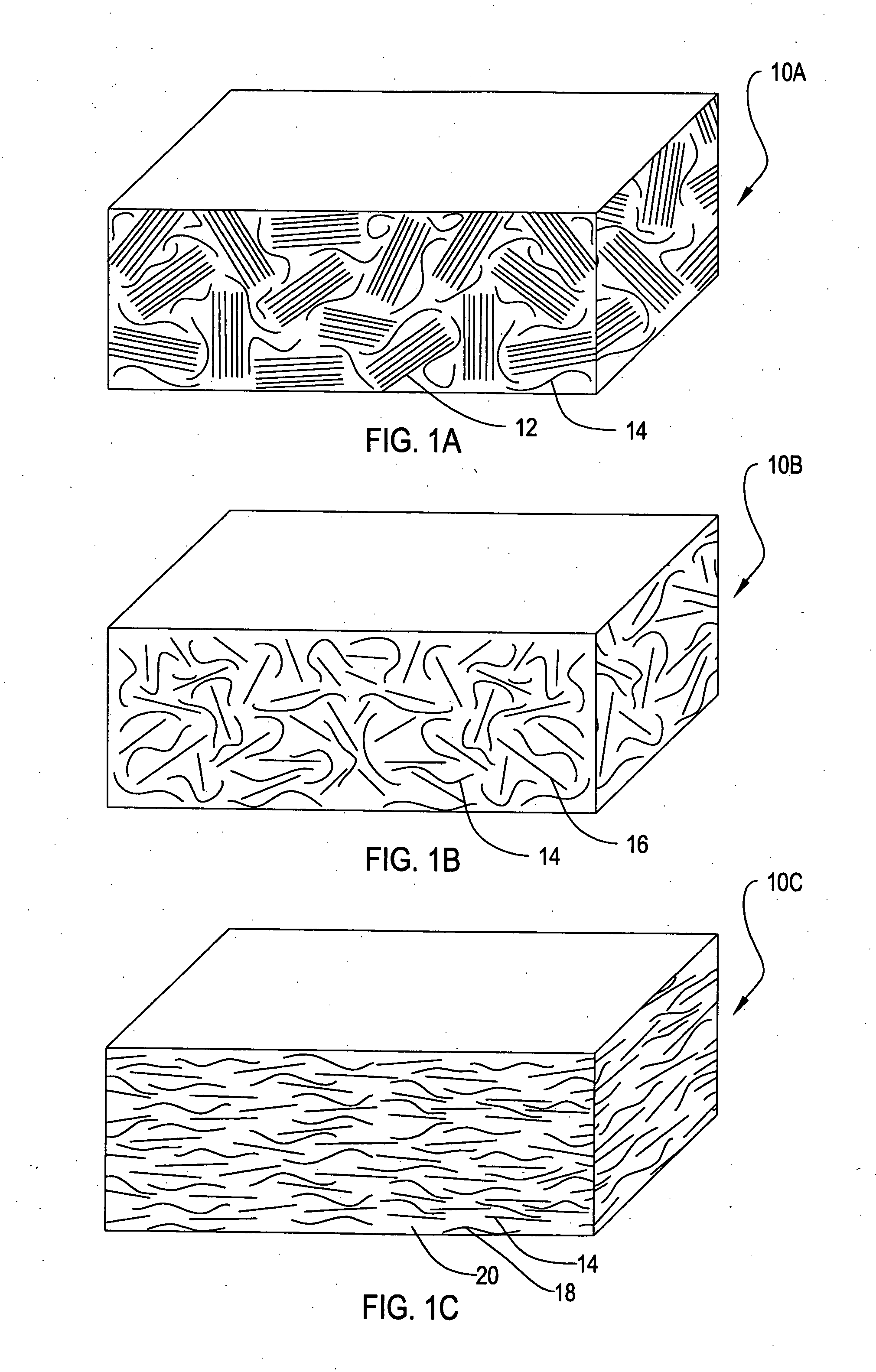Ultra-low permeability polymeric encapsulants for acoustic applications
- Summary
- Abstract
- Description
- Claims
- Application Information
AI Technical Summary
Benefits of technology
Problems solved by technology
Method used
Image
Examples
Embodiment Construction
[0018] The present invention utilizes chemically modified clay nanoparticles to significantly lower water permeation through acoustically clear polyurethane. The use of nanoparticle clay fillers allows avoidance of filler / acoustic clarity problems. This is because the amount of filler needed to achieve a large decrease in permeability is low, ca. 2-8%. This minimizes the change in density, ρ, and sound speed, c.
[0019] In order to form an intercalated nanocomposite, the appropriate particles must be selected. The particles should be stacks of particles having a mean diameter at least 100 times the mean thickness. In other words, preferably, the aspect ratio should be greater than 100. An intercalated dispersion of the particles must be achieved. The polymer can then be allowed to polymerize between the plate-like particles to form a nano-composite that functions as a permeation barrier similar to a tile roof on a building. The intercalated geometry is essential for proper functionin...
PUM
| Property | Measurement | Unit |
|---|---|---|
| Fraction | aaaaa | aaaaa |
| Fraction | aaaaa | aaaaa |
| Thickness | aaaaa | aaaaa |
Abstract
Description
Claims
Application Information
 Login to View More
Login to View More - Generate Ideas
- Intellectual Property
- Life Sciences
- Materials
- Tech Scout
- Unparalleled Data Quality
- Higher Quality Content
- 60% Fewer Hallucinations
Browse by: Latest US Patents, China's latest patents, Technical Efficacy Thesaurus, Application Domain, Technology Topic, Popular Technical Reports.
© 2025 PatSnap. All rights reserved.Legal|Privacy policy|Modern Slavery Act Transparency Statement|Sitemap|About US| Contact US: help@patsnap.com



